How many ways can you think of to light a fire without using a small fire (e.g. matches, lighter, magnesium sparks...) to get the big fire started?
Today:
- Tie up loose ends
- Turn in textbooks
- Toast Marshmallows -- Physics of primitive fire making
1. Forward I'm heavy. Backward I'm not. What am I?
2. Figure out the pattern. Then tell what comes after 15 in the last series.
7, 5, 4
2, 3, 5, 4
12,6,3,5,4
1,3,5,4
15...
Today:
- Return Quizzes
- Check grades
- Turn in textbooks
- Wrap things up
- Exam review / study time
Handouts: See final exam prep page
Homework:
Find your textbook and bring it to next class.
Study for the final.
How does the ring shooter work?
Today:
- Electricity Quiz
- Work on solar cookers
- Make-up time
Homework:
- Turn in missing assignments
- Bring books to class
Something strange happens when I drop a magnet down a copper pipe. What happens, and why?
Today:
- Car files
- Go over answers to Electricity Quiz Review
- Optics -- refraction and reflection
- Refraction and Reflection Practice
Homework:
- Study for electricity quiz. Questions will come from Electricity Quiz Review.
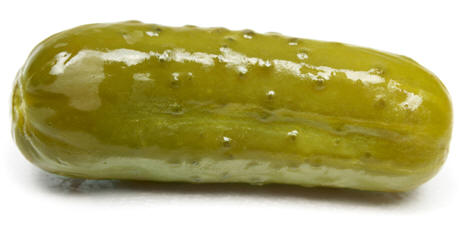 Warm-Up:
Warm-Up:
What will happen if I run 115V of household current through a pickle?
Why?
Today:
- Finish motors
- Complete quiz review
- Wiring activity?
Homework:
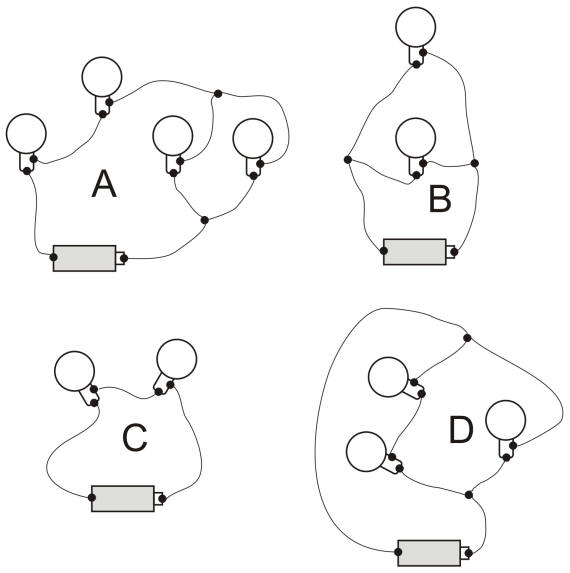 Class 33
May 15, 2014
Class 33
May 15, 20141. Which of the circuits on the right are series circuits?
2. Which circuits are parallel?
3. In which direction do the electrons flow, in the diagrams?
4. In some of these circuits, one light bulb burning out can cause all of the light bulbs to burn out. In which circuits could this happen?
5. How do light bulbs work?
Today:
- A1/2, A5/6: finish discussing phet simulation; make solenoid buzzers.
- A3/4: finish buzzers. Wiring circuits or motor.
What are these pictures supposed to convey?
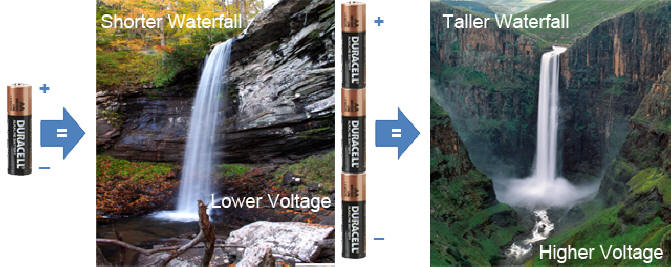
Today:
- Finish Electricity notes Part I? Electrostatics.
- Electricity notes Part II. Circuits.
- If there's time -- Make a Solenoid Buzzer.
- When you plug an appliance into a typical wall receptacle, how many volts of electric potential is the appliance receiving.
- The Van de Graaff generator produces an electrical potential of thousands of volts.
- Which will give you a stronger shock, the electricity in a wall receptacle or a Van de Graaff generator?
- Why?
Today:
- Projects are graded -- many are missing. Turn in your instrument project recordings.
- Contest Results
- Electricity notes Part I. Electrostatics.
- Electricity notes Part II. Circuits.
Current Contest Rankings: Overall rank = Doppler rank + 2*(Name That Tune Rank). Yellow teams are missing either doppler or name that tune data.
|
Scaled Rank (2xNTT + D) |
Current Overall Rank |
|
| 5 | Natalie, Karyn, Mackenzie | 1 |
| 16 | Jackie, Morgan, Dominique | 2 |
| 17 | Eniz, Zach, Peter | 3 |
| 21 | Alex, Sam, Sarah | 4.5 |
| 21 | Allie, Anna, Emily | 4.5 |
| 21 | Tran, Ellie | 6 |
| 28 | Alyssa, Sophie, Deanna | 7 |
| 29 | Sarah, Sonja, Ashlyn | 8.5 |
| 29 | Kara, Christina | 8.5 |
| 33 | Emily, Danielle | 10 |
| 36 | Charlotte, Maria, Faris | 11 |
| 37 | Justin, Jake | 12 |
| 40 | Alex, Ben | 14 |
| 40 | Hannah, Gabrielle | 14 |
| 40 | Ryan, Chris, Dom | 14 |
| 42 | Pat and John | 16 |
| 44 | Liam, Carolyn | 17 |
| 45 | Adam, Belan | 18 |
| 49 | Mary, Sarah F., Shelby | 19 |
| 51 | Adam, Trevor | 20 |
| 54 | Dylan, Chris G, Zach | 21 |
| 55 | Andrew, Tyler | 22 |
| Groups in yellow are missing some contest component. | ||
Homework: ?
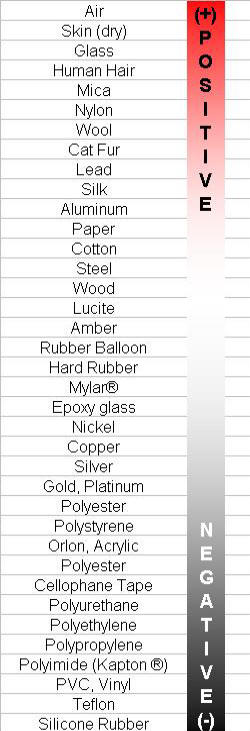 Class 31
May 6, 2014
Class 31
May 6, 2014The "triboelectric series" (on the right) ranks materials based on some property. Can you guess the property?
Today:
- I haven't finished grading all of the project .wav files. I'll have that done by next class.
- A1/2 -- contest, Electrostatics
- A3/4 -- finish name that tune. Electrostatics
- A5/6 -- finish contest. Test. Electrostatics
Current Contest Rankings: Overall rank = Doppler rank + 2*(Name That Tune Rank)
| Doppler Velocity Determination Contest | |||||
| Rank | Group | #1 error | #2 error | #3 error |
Average Error |
| 1 | Adam, Belan | 0.25% | 0.00% | 0.00% | 0.08% |
| 2 | Charlotte, Maria, Faris | 34.54% | 0.11% | 0.91% | 11.85% |
| 3 | Liam, Carolyn | 0.51% | 21.29% | 18.78% | 13.53% |
| 4 | Sarah, Sonja, Ashlyn | 0.01% | 43.60% | 0.04% | 14.55% |
| 5 | Pat and John | 33.08% | 66.00% | 10.10% | 36.39% |
| 6 | Alex, Sam, Sarah | 0.00% | 54.76% | 79.87% | 44.88% |
| 7 | Alex, Ben | 33.01% | 45.14% | 59.63% | 45.93% |
| 8 | Eniz, Zach, Peter | 138.67% | 15.20% | 10.84% | 54.91% |
| 9 | Hannah, Gabrielle | 82.26% | 43.59% | 39.73% | 55.20% |
| 10 | Allie, Anna, Emily | 163.23% | 31.10% | 19.59% | 71.30% |
| 11 | Emily, Danielle | 799.75% | 22.63% | 442.24% | 421.54% |
| Name That Tune Contest | ||
| Rank | Group | Name That Tune Score |
| 1 | Eniz, Zach, Peter | 21 |
| 2 | Allie, Anna, Emily | 20 |
| 3 | Alex, Sam, Sarah | 19 |
| 4 | Kara, Christina | 19 |
| 5 | Tran, Ellie | 18 |
| 6 | Sarah, Sonja, Ashlyn | 14 |
| 7 | Pat and John | 11 |
| 8 | Faris, Charlotte, Maria | 10 |
| 9 | Liam, Carolyn | 8 |
Homework: None
Explain this video -- "Amazing Water and Sound Experiment" -- One class has already seen this.
Today:
- Practice time (except A56)
- Contest
- Doppler Velocity Measurement
- Name That Tune Contest -- Contest Song List
- Finish project recordings and email to Mr. Stapleton. Try to send them all in one message.
Homework:
Why does your hair stand on end when you rub a balloon on your head?
Today:
- Test. (A5/6 -- Electrostatics Notes Here are the filled-in notes)
- Finish Doppler Identification Sheet
- Finish Recordings
- Prepare for the contest (Final song list)
Homework:
- Contest next class. Decide who will play and who will guess.
Get out your instrument. Listen to these changes in pitch. Try to match the interval with your instrument. See if you can determine the change in pitch, measured in half-steps.
1. Interval 1
2. Interval 2
3. Interval 3
4. What about this train? (2nd file)
Today:
- Doppler identification practice. video on Misterstapleton YouTube channel
- Check/discuss practice test.video on Misterstapleton YouTube channel
- Guitar building link -- installing frets, etc.
Homework:
- A1/2 and A 3/4: Test next class. A 5/6: Test on Tuesday.
- Contest on Friday. Songs and Doppler ID. (Final song list) There will be no volume contest this year.
- Turn in all project recordings and Doppler ID sheet. by Friday.
 Class
27 Thursday,
4/17/14
Class
27 Thursday,
4/17/1420.
Explain how electricity causes a speaker cone to move in
and out.
 21.
Explain how a magnetic guitar pickup sends signals to an
amplifier.
21.
Explain how a magnetic guitar pickup sends signals to an
amplifier.
22. What does an amplifier do?
23. Why is the pickup wire coated with enamel?
24.
Why does the pickup wire need to be wound so many times?
25.
Why does the pickup wire need to be so thin?
26.
Why won’t the pickup work if the wire gets broken?
Today:
- Approve song list.
- Here's the updated song list
Homework:
- Practice test due on the Monday after break. Look at the solutions if you need to.
- Name that tune contest on Friday after break. Also doppler identification contest.
- Test on Wednesday after break.
1. What is the real shape of the standing wave in a plucked string?
2. When music experts talk about the pitch of a vibrating string, they talk about "fundamental" frequency and "harmonics." What do these terms mean? How can you hear them on a string instrument?
3. Why are some pickups called "humbuckers?"
4. Why should Hz be capitalized? (my apologies for getting it wrong for my entire life up until now)
Today:
- How to play at home...
- speakers
- playing through a PC -- control panel (sometimes delayed)
- Begin recordings
- You may need to plug in your mic to the microphone jack before you open Audacity. If you want to listen as you record, get into the control panel and make that happen. You will need headphones. Recording directions are in your project guidelines.
- Get practice test and answers
Homework:
- Practice test due on the Monday after break.
- If you want your own plugs, scrounge for old headphone plugs or other audio plugs.
- Bring in headphones so that you can listen to your recordings.
1. What was the loudest noise ever?
2. What's the difference between melody and harmony?
3. What's the difference between vibrato and tremolo?
Today:
- Melody vs Harmony
- Finish Music Notes
- Create a spreadsheet for marking frets (even if you didn't use a spreadsheet)
- Turn-in your spreadsheet by emailing it to Mr. Stapleton.
- Mark your fret marks. Mark minor and major keys if you want.
- Start making recordings.
Handouts:
Homework:
- If you want your own plugs, scrounge for old headphone plugs or other audio plugs.
- Bring in headphones so that you can listen to your recordings.
Suppose you calculate the correct position of your first fret mark, based on the correct frequency for that musical note. When you hold the string down at that first fret mark (one half step above the "open string") and pluck, you may find that the pitch is not exactly what you expected.
1. What might cause the pitch to be different from the frequency you used in your calculations? [hint: you're pushing the string downward]
2. Will the actual frequency tend to be too high or too low?
Today:
- Brainstorm songs for "name that tune" competition.
- Finish pickups. Try instruments. Make recordings.
- How to listen as you record.
Handouts:
Homework:
- If you want your own plugs, scrounge for old headphone plugs or other audio plugs.
- Bring in headphones so that you can listen to your recordings.
Suppose the frequency of a musical note is 500hz...
1. What is the frequency of a note one octave higher?
2. What is the frequency of a note two octaves higher?
3. What is the frequency of a note 1 half step higher?
4. What is the frequency of a note 2 half steps higher?
Blocks 1 (8:30) and 2 (9:30) - Check out Dale Earnhardt's show car at CTE
Today:
- Some classes see Dale Earnhardt's show car
- Get instruments working
- Add fret marks?
- Brainstorm songs for "name that tune" competition.
Handouts:
Homework:
True: If you create an electric current in a coil of wire, that wire will push or pull a nearby magnet.
True: If you move a magnet near a coil of wire, you will create an electrical current in the coil of wire.

*The diagram on the right shows some of the parts of a speaker. The yellow wires are part of a circuit that is powered by a stereo. The stereo provides current that alternates in direction and magnitude. How does this create sound?
Today:
- Finish notes -- physics and music
- Create fret placement calculators
- Work on instruments -- begin making your pickup when your instrument works acoustically.
Handouts:
Homework:
- Review your instrument notes.
- Think about how to amplify your instrument without an electric amp.
None -- website wasn't working
Today:
- Return Tests
- Finish notes on music
- Create fret placement calculator
Handouts:
Homework:
- Think about how you might want to design your instrument. Hopefully you can build it next class.
How do you think we might make lever sledding even safer than before?
Today:
- Test
- Notes: physics and music
- Perform calculations for fret placement
Handouts:
Homework:
- Think about how you might want to design your instrument. Hopefully you can build it next class.
Some instruments are played with bows.
1. How does a bow cause the a string to make sound?
2. What needs to be added to the bow so that it can perform at its best
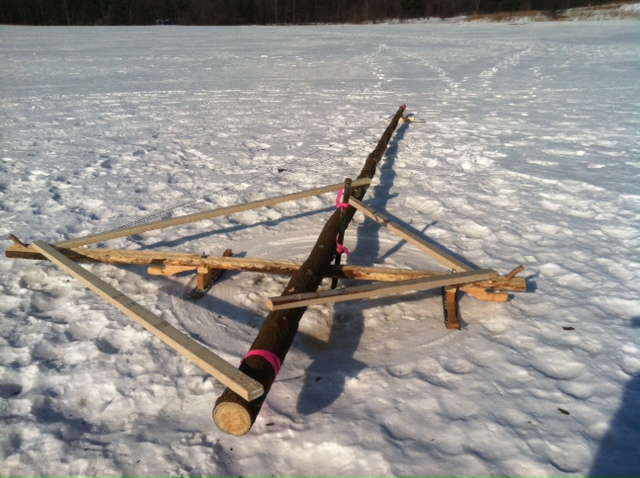
Today:
- Sledding... hopefully.
- If the sled doesn't work: waves concepts applied to music and instrument design
Handouts:
Homework:
- Study for test. Test on Friday.

1. How many nodes and antinodes are in shown in the standing wave above? How many wavelengths?
2. What is the wavelength of the standing wave?
3. If the frequency of the standing wave is 220hz, what is its velocity?
4. At that same velocity, how long should the wavelength be in order to produce a frequency of 440hz (an "A"?
5. What characteristics determine the frequency of a plucked string? Why?
Today:
- Discuss the test -- finish practice test discussion if necessary.
- Introduction to electric diddley bow project, major and minor keys, etc.
- Design/plan your instrument. Will you need to bring materials?
- Fret placement calculations.
Handouts:
Links:
- Instrument Tuning Directions
- virtual piano
- relative pitch calculator
- Song list with Random Song Chooser
- Instrument links
richard johnston, .... makes one
Homework:
- Study for test. Test on Friday.
- Snow lever on Monday.
1. Sound volume is measured in decibels. The table below relates sound pressures (amplitudes) to decibels. Do you notice anything interesting? Do you have any questions?
2. How loud is the unit ventilator?
3. Why is there a limit regarding how loud a sound can be?
| Source of sound (in air) |
Sound Pressure -- amplitude (psi) |
Volume in Decibels, calculated by 20*LogP/Po |
Po (threshold of hearing, in psi) | Loudest Pressure divided by Quietest Audible Pressure |
| Shockwave (distorted sound waves > 1 atm; waveform valleys are clipped at zero pressure) | 14.69543147 | 194.0956869 | 2.9E-09 | 5,067,390,163 |
| Theoretical limit for undistorted sound at 1 atmosphere environmental pressure | 14.69543147 | 194.0956869 | ||
| Stun grenades | 2.900652647 | 180.0019545 | ||
| Simple open-ended thermoacoustic device[6] | 1.830166788 | 176.0018534 | ||
| .30-06 rifle being fired 1 m to shooter's side | 1.053662074 | 171.206067 | ||
| M1 Garand rifle being fired at 1 m | 0.728498912 | 168.0006182 | ||
| Rocket launch equipment acoustic tests | 0.580130529 | 166.0225545 | ||
| Jet engine at 30 m | 0.091660624 | 149.9956962 | ||
| Threshold of pain | 0.009166062 | 129.9956962 | ||
| Vuvuzela horn at 1 m | 0.002900653 | 120.0019545 | ||
| Hearing damage (possible) | 0.002900653 | 120.0019545 | ||
| Jet engine at 100 m | 0.029006526 | 140.0019545 | ||
| Non-electric chainsaw at 1 m | 0.000913706 | 109.9681656 | ||
| Jack hammer at 1 m | 0.000290065 | 100.0019545 | ||
| Traffic on a busy roadway at 10 m | 9.15156E-05 | 89.98194182 | ||
| Hearing damage (over long-term exposure, need not be continuous) | 5.16316E-05 | 85.01035459 | ||
| Passenger car at 10 m | 2.90065E-05 | 80.00195455 | ||
| EPA-identified maximum to protect against hearing loss and other disruptive effects from noise, such as sleep disturbance, stress, learning detriment, etc. | #NUM! | |||
| Handheld electric mixer | 5.51124E-06 | 65.57702656 | Classroom Unit Ventilator | |
| TV (set at home level) at 1 m | 2.90065E-06 | 60.00195455 | ||
| Normal conversation at 1 m | 2.90065E-06 | 60.00195455 | ||
| Very calm room | 9.19507E-08 | 30.02313979 | ||
| Light leaf rustling, calm breathing | 9.16606E-09 | 9.995696197 | ||
| Auditory threshold at 1 kHz | 2.90065E-09 | 0.001954545 |
Today:
- Go over homework.
- Final mechanical waves info -- finish notes and practice test
- Air Pressure
Handouts:
Homework:
- Study for test. Test next Friday.
- Barring unforseen troubles, snow lever next Wednesday.
Some fireplaces and wood stoves have blowers. When the blower operates at the resonant frequency of some part of the fireplace, the stove rattles or buzzes.
As a stove heats up, it often buzzes for a while and then stops. The buzzing may start and stop several times over the course of a day. If the blower always operates at the same rpm, why does the buzzing start and stop?
Today:
- Try to fling stuff or people with the snow lever -- if it hasn't broken in a previous class
- Continue Mechanical Waves. Work on Practice Test
Handouts: Practice Test
Homework:
A1/2 -- Practice test, 1-23A3/4 -- Practice Test, 1-31
A5/6 -- Practice Test 1-31
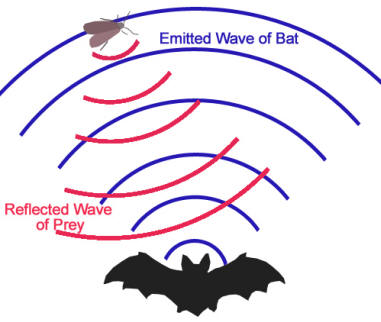 Bats
have two very sensitive ears and the ability to produce prolonged
series of sound waves. By making a sound and then listening to
the echo, how can a bat hear a difference between...
Bats
have two very sensitive ears and the ability to produce prolonged
series of sound waves. By making a sound and then listening to
the echo, how can a bat hear a difference between...
1. ...an object to its left versus its right?
2. ...distant objects versus nearby objects?
3. ...large objects versus smaller objects?
4. ...objects moving toward versus away from the bat?
5. You see a flash of lightning. 10 seconds later, you hear the thunder. How far away was the lightning strike?
Today:
- Blocks A1/2 and A3/4: Check homework
- Wrap up introductory mechanical waves stuff (resonance, more problems for homework)
Handouts:
Homework: A56 -- complete Waves practice #1
- The speed of sound in air is about 768 miles per hour. What happens when a noisy object travels faster than the sounds it is producing?
- Suppose you're standing next to a highway, listening to the passing cars. What happens to the cars' pitch as they pass by? Do you know why?
Today:
- Discuss Test questions -- force vs speed
- Waves
- Waves notes, part 1 (filled-in answers)
- Listen to some sounds
- Waves practice #1
Videos from last year:
Homework: Blocks A1/2 and A3/4 -- complete #1-23 on waves practice sheet. Block A5/6 -- no homework.
Part I: Snow Lever Parts
Part II: Snow lever flings Emmerson
Today:
- Test review
- Spreadsheet problems -- Practice Test #1. Be prepared for the relative positions of the cells to be different.
- Begin next topic: Waves
- Waves notes, part 1 (filled-in "answers from last year)
- Waves practice #1
Homework:
- Test next class.
- Bring snow clothes next Wednesday. We will try the snow lever (weather permitting, and assuming it doesn't break during an earlier block).
Is curling ice (for the sport of curling) rougher or smoother than regular ice?
Today:
- Review Excel Spreadsheet
- Tie a trucker's hitch
- Physics of the Winter Olympics
- Practice Test #1
Homework:
- Test on the 2nd class day after break.
 Class
11 Wednesday,
2/19/14
Class
11 Wednesday,
2/19/141. An arch can't support itself if the top pieces are missing, but a dome can. Why?
Today:
- Revisit arch construction.
- Igloo Pictures
- How to use Excel
- Practice Test #1
Homework:
- Finish practice test
 Class
10 Monday,
2/17/14
Class
10 Monday,
2/17/141. How does an arch (like the one on the right) support itself?
2. The arrows in the second diagram represent forces of different magnitudes and directions,
 acting
on an object. In which direction will the object move?
acting
on an object. In which direction will the object move?3. In the third diagram on the right, which of the two arches is most stable?
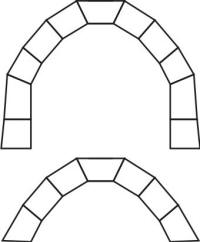
4. In a stable arch, what type of force plays the biggest role -- compression, tension, or bending?

5. If you hold an egg in your palm and squeeze it, why is it so hard to crack?
6. How did Mr. Stapleton design this stable arch?
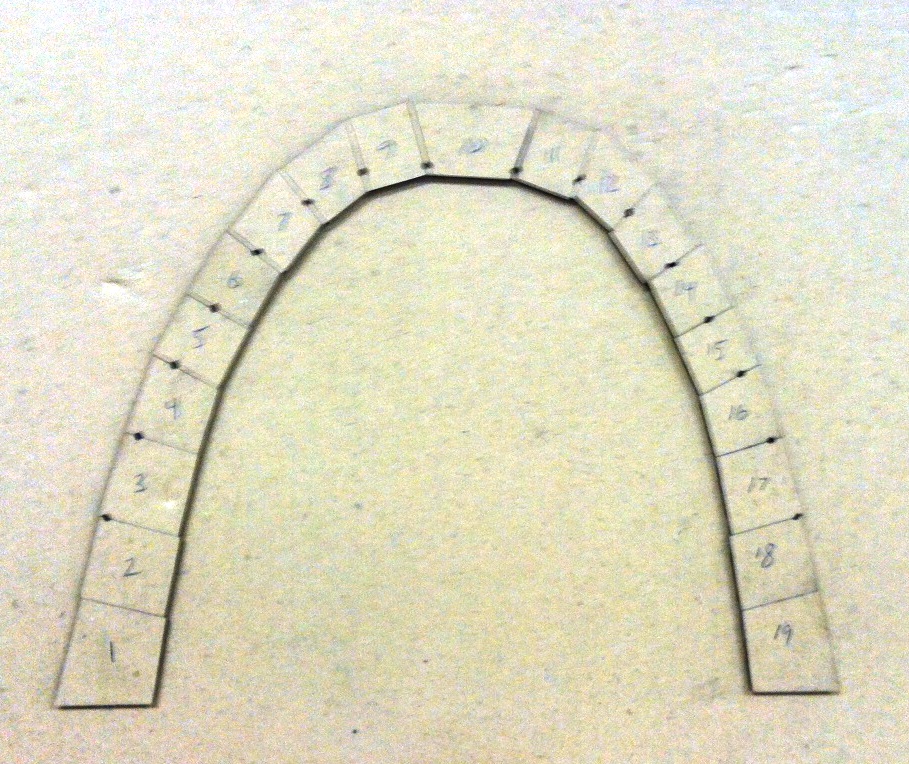 Link
LinkToday:
- Build an igloo
- Practice Test #1
Homework:
- ?
Today:
- Check homework problem.
- Activity: creating and testing simple machines.
Homework:
- Bring snow clothes on Monday!
When a wooden dart was fired into the class pendulum, the pendulum's mass was 0.722kg. The dart's mass was 0.023kg. After the collision, the pendulum swung to a height of 0.76m. What was the dart's mass before the collision?

Today:
- Example mechanical advantage calculation
- Calculate the mechanical advantages of ten machines.
Homework:
- Ballistic pendulum problem #2.
 Warm-Up:
Warm-Up: 1. Have you ever tied a trucker's hitch?
2. A trucker's hitch includes a simple machine that has* a mechanical advantage of two. Explain.
video
Today:
- Discuss homework
- Return Quizzes
- Ballistic Pendulum Calculations
- Calculate mechanical advantages
Homework: None
Today:
- Quiz: Momentum and Impulse
- Ballistic Pendulum Calculations
- Mechanical advantage activity (simple block and tackle)
Homework:
- Read textbook section 8.7. Answer review questions 5,14, and 16, on page 117.
1. How does a safety helmet protect one's head?
2. How do aerial skiers turn in the air?
3. Why did a guy in a "squirrel suit" crash land in a bunch of cardboard boxes?
NBC olympic videos
Squirrel suit dive into cardboard boxes
Today:
- Check/review homework.
- Determine the velocity of a projectile shot at a ballistic pendulum.
- Log on to a computer and complete Momentum and Impulse Practice Problems, in Excel
Homework:
- Quiz next class over impulse and momentum notes, textbook questions, nerf dart calculations, and ballistic pendulum calculations.
 Class
4 Thursday,
1/30/14
Class
4 Thursday,
1/30/14If the mass of the ball is equal to the mass of the pendulum, how will the velocity "just after collision" compare to the velocity of the ball "before collision?"
Today:
- Finish the notes on impulse and momentum
- Discuss Nerf Darts -- What is the relationship between pvc length and dart speed?
- Nerf dart impulse and ballistic pendulums
- Video: supersonic ping pong ball
Homework:
- Finish all of the problems in the "momentum notes" handout.
- Calculate the average force that propelled your Nerf dart during it's fastest launch.
Other: Mythbusters season 1 episode 12 chicken gun
Two cars crash into one another.
1. What happens to their net momentum during the crash?
2. What happens to their net energy during the crash?
Today:
- Finish the notes on impulse and momentum
- Nerf dart activity. Make a Nerf dart fly as fast as possible, powered only by compressed air.
Homework: None
1. What will happen if I hold a tennis ball on top of a basketball and drop them to the floor together?
2. What if I reverse their positions?
3. Have you ever been whipped by a towel?
4. Do you know how to maximize the effectiveness of a towel whip?
Today:
- Check/review homework. [Read sections 7.1-7.3, in the textbook. Answer questions 1, 3, 5, 7, 9, and 10 on page 99.]
- Notes: Momentum and Impulse
- Investigate the relationship between barrel length and Nerf dart velocity. Try to decelerate a Nerf dart without damage to the dart.
Homework:
- Read textbook sections 7.4-7.5. Answer questions 12, 13, 15, and 17.
Suppose I stand a board on end and shoot it with a Nerf dart. Am I more likely to knock the board over if I use a dart that sticks to the board or if I use a dart that bounces off of the board?
Today:
- Return and discuss exams
- Notes: Momentum and Impulse
- Photograph and disassemble cars
Homework:
- Read sections 7.1-7.3, in the textbook. Answer questions 1, 3, 5, 7, 9, and 10 on page 99.